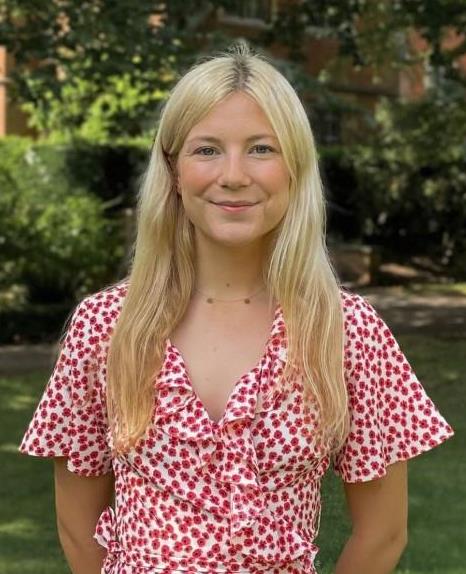The latest Special Issue of Notes and Records examines the Expectations and Utility in Eighteenth Century Knowledge Economies and we asked one of the Guest Editors, Kelly J. Whitmer, some questions about her research.
The latest Special Issue of Notes and Records examines the Expectations and Utility in Eighteenth Century Knowledge Economies and we asked one of the Guest Editors, Kelly J. Whitmer, some questions about her research.
Why did you decide to guest edit the special issue?
The issue originated at the 2016 History of Science Society annual meeting in a roundtable session focusing on relations between expectations, useful knowledge and the knowledge economy in eighteenth-century Europe. Participants aimed to draw more attention to the role of imagining futures in the design and implementation of projects and to their components, target audiences, politics and rationales. As one of the organisers, I was interested in applying to the eighteenth century what has become an important analytical concept (originated by Sheila Jasanoff) in Science and Technology Studies more generally: the “sociotechnical imaginary” or “dreamscape.” We sought to highlight both the prescriptive and idealistic dimensions of projects promising improvement in this context. There was a real coherence between all of our papers at the session and positive audience response, so we were determined to publish our papers as part of a special issue.
You analyse the work of “projectors” in eighteenth-century Germany. What sorts of individuals were they, and what was their larger reputation? What was the relative role of utility and of idealistic altruism in their schemes?
Projectors were professional designers of projects promising improvement in both the near and distant future who often peddled them to the leaders of territorial states. They were knowledge brokers, who sought to convince people with political power to implement their ideas by creating new policies, real life technologies and more.
Framing their schemes as having the potential to improve lives meant that projectors could have positive reputations. For example, our special issue features work by Vera Keller (author of Knowledge and the Public Interest, 1575-1725) who shows how scholar-projectors described their altruistic ideals and developed tools, like wish lists, that enabled them to pursue new inventions and ideas—to go beyond their own expectations. Some projectors like Jan Amos Comenius advocated for educational reform.
Yet, despite their insistence upon acting in the public interest, projectors often had bad reputations. The case of Johann Bessler (1680-1745), who went by the name of Orffyreus, is instructive. Bessler was well known for his “invention” of fraudulent perpetual motion machines.
For more on this story, see this virtual exhibit of the Utrecht University Library and this article by Simon Schaffer.
Our goal in this special issue is not to call into question the frequently negative portrayal of the projector as schemer in the eighteenth century, as this is not the whole story. We wanted instead to analyse knowledge politics, and the aspirations and future-oriented dimensions of project-making. To what extent did our historical actors’ projects communicate specific ideas and techniques for improving people’s lives in the near future through the promotion of “useful knowledge”?
You mention in the issue’s introduction: “throughout the eighteenth century the application of knowledge was always contested socio-political terrain.” Please explain.
Projectors claimed to be interested in notions of utility and applying knowledge to improve society. Yet, links between utility and improvement were (and are) not necessarily self-evident; much work went into framing the relationship to show how improvements at the level of daily life would benefit states and generate wealth. A plan for applying knowledge to the benefit of a particular community, institution, such as the university, which is the focus of Dominik Hünniger’s contribution, or even agriculture, the focus of Denise Phillips’ article, was never a neutral or purely idealistic endeavor. It grew out of constant engagement with existing social hierarchies and political structures.
Hünniger’s article on the “useful university” focuses on Johann Christian Fabricius, known today as a significant entomologist. See here for more on Fabricius and for Hünniger’s work as Managing Director of the Lichtenberg Kolleg in Göttingen. Phillips recently co-edited a book on the history of agriculture and the life sciences. Her article focuses on the projector Otto von Münchhausen.
What surprised you the most in your research?
Projectors presented themselves as the originators of entirely new designs and ideas. Yet what they often did was present examples of instruments, practices and institutions created by others and then repackaged them, drawing attention to their unrealized potential. Not all projectors set out to deceive, yet it would have been easy to view them as intentionally co-opting ideas, tools and expertise. This was the case for P. J. Marperger, the focus of Whitmer’s article.
Notes and Records is an international journal which publishes original research in the history of science, technology and medicine. Find out more information about submitting to Notes and Records
For other publications from Kelly J. Whitmer and Larry Stewart please see the following:
Main image
P.J. Marperger’s *Curious and Real Lexicon of Nature, Art, Mines and Trade* conveys much about aspiration and the idealism of projecting in a “knowledge economy.”




